




Happy new year! As we welcome 2023 and what’s to come, I’m excited to spotlight Pikes Peak Library District’s strategic plan for the next three years. As we begin to implement this new plan, I wanted to ensure District Discovery readers got a glimpse into the strategic planning process and what we’ll focus on, all of which was informed by public and sta input.
PPLD’s new vision, mission, and values, announced in Spring 2022, became our starting point to develop this plan. Last summer, our team hosted multiple opportunities for Library patrons and other community members to provide valuable input as part of this planning process, and nearly 1,200 participated, whether online or in-person at one of our libraries. With rich qualitative data from the public and 400plus sta , we uncovered several common themes – and those helped guide a strategic planning committee of sta , Board, and community representatives in identifying PPLD’s six areas of focus for 2023 - 2025. ( ey’re listed next to my letter.)
If you want to nd out more and see where, why, and how the Library District will reinvest taxpayer dollars back into the community through 2025, visit ppld.org/strategicplan. We look forward to using this new plan to ful ll our mission, uphold our values, and aim to achieve our vision for this great community.
Teona Shainidze-Krebs Interim Chief Librarian & CEOHere are the areas of focus for Pikes Peak Library District's 2023 - 2025 strategic plan:
PPLD is accountable to all stakeholders through scal responsibility, continuous evaluation, and by sharing ndings with the public.
PPLD builds community through relationships and partnerships to connect people to relevant resources, services, and spaces.
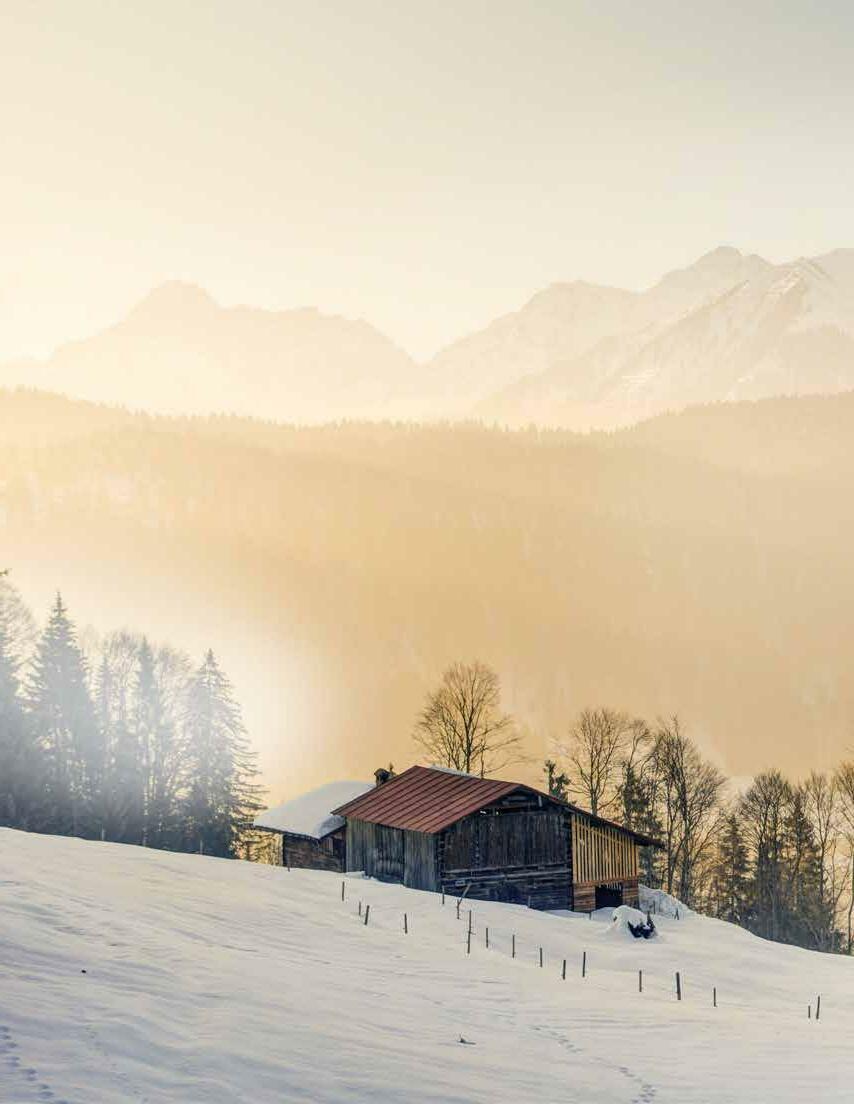
PPLD invests in and elevates community awareness of its resources, services, and spaces.
PPLD is an access point for everyone to engage with resources, services, and spaces as they choose.
PPLD provides equitable access to physical and virtual spaces in safe and inclusive environments.
PPLD values, trusts, and invests in sta .
To review the plan in its entirety, visit ppld.org/strategicplan





With its brick exterior and stately columns framing the front door, Old Colorado City Library has aged gracefully over the course of its nearly 120 years providing library service to its community.
e rst library in Colorado City (before it was “Old”) was started by the Woman’s Christian Temperance Union in 1895 and soon named after Mrs. Lydia Woods when she donated $1,000 for the collection. In 1903, it became the Woods Free Library and eliminated membership fees.
In January 1903, the Colorado City Chamber of Commerce learned that industrialist and philanthropist Andrew Carnegie would donate $10,000 to build a new library if the city provided land and $1,000 a year for operating expenses. It proved to be an investment that is still showing dividends well over a century later.

On Dec. 7, 1904, the new library, designed by architect George M. Bryson, opened its doors to the public. When Colorado City was annexed by Colorado Springs in 1917, the library and its collection were sold for a grand total of $1 to the Colorado Springs Public Library (a precursor to Pikes Peak Library District). In 1977, it changed names again and became the Old Colorado City Branch.
Over the years, the building has undergone several renovations, including in 1980, 1992, 2007, and most recently in 2021, when the original r wood oors were replaced. PPLD works closely with the State Historical Fund to ensure the building matches the original appearance as closely as possible.
Just because the building looks much as it did in 1904 does not mean that it’s stuck in the past.
“We get to enjoy both worlds,” explains Amber Cox, manager of Old Colorado City Library. “We’re modern and relevant but still have strong ties to our historic roots. Our building may have a traditional feel, but as part of Pikes Peak Library District, our patrons have access to just about everything they could possibly need to pursue their interests, needs, and goals.”
e resources o ered by the library are as varied as its patrons: children's programs and books, DVDs, graphic novels, large-print books, and crafting programs are all popular, as well as tech resources such as the computer lab, WiFi, scanning, and wireless printing. ere is even a circulating board game collection featuring popular favorites like "Ticket to Ride," "Settlers of Catan," and "Dixit."
e history only enhances the experience of a visit to the library.
“Nothing compares to working in this space,” says Senior Associate David Rasmussen, who has worked in the building for 17 of his 21 years with PPLD. “Not only do you feel the spirits of all the authors and creators of works old and new on the shelves, but there’s a keen sense of history as generations come and go, all seeking knowledge and new understanding in the hope of a better world and more inclusive community.”
ere may be other spirits lurking, as well.
“Old Colorado City Library has been rumored to have a ghost in the basement. roughout the years, the overnight cleaning crew have made comments about strange energy and shadows that lurk around the building at night,” reports Senior Associate Sarah Hoelting.

Do not let that dissuade you from using the meeting space in the basement.

“ e meeting room is under-used for private functions. It’s quiet, removed, and includes tech and other support. And the room has been ADA accessible since the 2007 renovation,” says Rasmussen.
e best resource available at Old Colorado City Library is its sta . As Cox explains, “ ey are fun, quirky, imaginative, hardworking, kind, thoughtful, and community-focused.”
at emphasis on community is apparent when speaking with library sta
“One of my favorite aspects of my job is partnering with our local community members. e library has remained an active supporter of its Westside neighbors, like the Westside Community Center, Westside Cares, the Old Colorado City History Museum, and the local businesses along Colorado Avenue,” says Hoelting.
library as a child, and then bringing their own children and grandchildren in to introduce them to all that their local library has to o er. is lifetime support for many members of our community is a unique and important facet of Old Colorado City Library, made possible by our extensive length of service to this neighborhood.”
And so, 118 years after rst opening its doors, Old Colorado City Library honors its past, provides services relevant to the present, and keeps an eye on the future.


“We’ve watched our patrons’ kids grow up and seen seniors go from computer illiteracy to complaining that the internet is too slow,” says Rasmussen “It’s amazing to ponder what future times will be like, with so much astonishing history to look back on.”
In 1903, Andrew Carnegie donated $10,000 to build a new library. at is the equivalent of $338,650 today!



Have you ever wondered why we set our clocks back every fall and turn them forward every spring?
Most people think Daylight Saving Time (DST) is an American invention, but it actually began in under Bay, Canada, in 1908. e residents of that small Ontario town set their clocks forward one hour at midnight on July 1 that year. By doing so, they gained an extra hour of light in the evenings. ey turned their clocks back an hour on September 1 so there would be more light in the mornings.
It is not known where they got the idea — contrary to widely held belief, Benjamin Franklin did not invent it, but someone in under Bay might have learned that George V. Hudson, an entomologist in New Zealand, proposed turning the clocks forward two hours in the spring. Hudson advanced the idea in a paper he presented to the Wellington Philosophical Society in 1895, suggesting that the time shift would better match the sunshine hours to the time people were awake. And it would give him more time to collect bugs.

Ten years later, in 1905, British construction tycoon William Willett, advanced the idea of turning clocks ahead by 80 minutes over four weeks in April; 20 minutes each Sunday, and reversing the process on the four Sundays in September. Willett led a campaign in the British Parliament, and bills were introduced several times in 1908 and 1909, but Daylight Saving Time did not become law until 1916, a year after Willett’s death.
Germany and Austria were the rst countries to adopt Daylight Saving Time, just weeks before the legislation passed in London. Europe was embroiled in World War I at the time, and the one-hour time shift helped to conserve electricity and fuel that was needed for the war e ort.
e United States followed suit on March 31, 1918, but Daylight Saving Time was repealed a year later. Legislators came under pressure from the farming industry. Again, contrary to widespread belief, farmers found the changes disruptive — it throws o harvesting schedules. However, Daylight Saving Time was restored nationally during World War II, from 1942 to 1945.
Many localities, though, kept up the practice after the war. Over the next 21 years, states, cities, and towns adopted and set their own start and end times for Daylight Saving Time. e result: One could pass through multiple di erent time zones traveling from one state to another in just one day.
In 1966, Daylight Saving Time was standardized by the passage of the Uniform Time Act, but there are still holdouts. Hawaii and Arizona, as well as several U.S. territories, do not participate.
Daylight Saving Time now is the rule in more than 70 countries and a ects more than a billion people.
Not everyone likes Daylight Saving Time. Opponents say that it does not save as much energy as it is purported to save. One study, conducted in southern Indiana in 2008 by the National
1895





George V. Hudson suggests “spring forward” to better match sunlight hours to the hours people were awake.






Construction tycoon William Willett suggests "spring forward" over four weeks in April.
Bill introduced to British Parliament. Residents in Thunder Bay, Canada begin implementing DST to gain extra sunlight.

Germany and Austria adopt DST, followed within weeks by Britain.
The U.S. law is repealed.
Bureau of Economic Research, used data from electric bills to conclude that energy use actually increased slightly during its use.
ere’s also evidence that Daylight Saving Time can a ect people’s health. Studies have noted an increase in tra c accidents, injuries in the workplace, heart attacks, suicides, and miscarriages at the beginning of the change, when people lose sleep and circadian rhythms can be disrupted. And those prone to depression may su er more when it ends. Parents of children whose school day starts early in the morning are not fond of taking them to school in the dark.
Proponents of Daylight Saving Time note that there are positive e ects as well. In some areas like Germany, studies have found that, at some latitudes, it leads to energy savings. Other studies have determined that it may contribute to better health by motivating people to get outside more.

Daylight Saving Time remains controversial in the United States. Some people would like to make it year-round, while others want to abolish it completely. In fact, a bill to make Daylight Saving Time permanent was introduced in Congress in 2022 and is still under consideration. So, for the time being, we will continue to go through the twice-a-year ritual of “spring forward, fall back.”
19421945 1966

The U.S. 1918 law is restored during WWII to save electricity and gas consumption.
DST is standarized throughout the U.S. through the Uniform Time Act.

DST is observed by 70 countries, affecting more than one billion people.


If you have lived in Colorado Springs for any length of time, you’ve probably heard of Fannie Mae Duncan. She is best known as the proprietor of the Cotton Club, a venue that hosted worldclass jazz performers like Louis Armstrong, Duke Ellington, Count Basie, Etta James, and Mahalia Jackson. Duncan was adamant that the Cotton Club’s doors were open to everyone, hence she placed the permanent sign, "Everbody's Welcome" in the club's window. e club was located just south of the Antlers Hotel, near the present location of the Pikes Peak Center for the Performing Arts. Duncan, who mentored young people, college educations, raised funds for various causes, and served on many city committees, was honored with a bronze statue that stands outside Pikes Peak Center.

Duncan is an icon of the Colorado Springs Black community, but there are other Black individuals who have made outstanding contributions to the city who are perhaps not as well known. Here are a few of them:

Scott was the city’s rst Black public school principal. As a child in 1917 Galveston, Texas, she had to attend segregated schools and faced discrimination when she tried to use the local library. But her intelligence and drive — she graduated high school at age 16 — were recognized by the women of Trinity Episcopal Church in Galveston, who awarded her scholarships for her undergraduate and graduate studies.

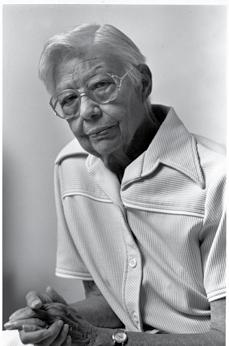
Gang wanted to become a social worker, but after moving to Colorado Springs, she could not nd an opening. Biding her time, she went back to school, obtained a teaching certi cate, and took a job teaching at East Junior High School. After a couple of years, a social worker position opened, and she took it.
Scott’s career decisions stemmed from her desire to help people as she had been helped, and she realized she could do even more for young people as an educator. She returned to school for graduate studies that prepared her to become a principal, and after nishing her degree was named principal of Gar eld School.
Scott, who had kept careful track of the scholarship money she received, paid back every penny to the Episcopal Church women. e Episcopal Diocese of Texas used that money to establish the Vera Gang Scholarship Fund in 1972. e fund still awards scholarships to women in good standing at their churches who are seeking professional certi cation or a degree.
In 1997, Colorado Springs School District 11 honored Scott by naming its newest school Vera G. Scott Elementary School.
Scott died Nov. 23, 2001, at age 89. You can read about her in the book titled, e Gang of One: e Life of Vera Gang Scott, by Marcella Ruch. is book is available for review in PPLD’s Special Collections at Penrose Library.
In the days after World War II, Colorado Springs had an active semipro baseball league that attracted die-hard fans. e City Baseball League was quite competitive but not open to Black players. But in 1949, a team of remarkable Black athletes, the Brown Bombers, shocked everyone by winning the city championship and then repeating the feat in 1950.

e Bombers included players like left-handed pitcher Justus Morgan, who later became pastor of Morgan Memorial Chapel, along with catcher Sam Dunlap, who went on to become the rst Black baseball coach in District 11 schools. ey grew up playing ball in vacant lots, using tree branches as bats. ey were scrappy, fast — and they wanted to beat the all-white teams.
Fannie Mae Duncan’s Cotton Club and a local shoe repair store sponsored the young team. As they traveled around the state, their reputation grew.
In the run-up to the 1949 championship, the Bombers beat a powerful team from Fort Carson. Two weeks later, they met the team called Still Bros.-Jackson in the championship game at Memorial Park and won, 9 - 6. It was the rst time a team with Black players claimed the championship.
Besides other teams, the Bombers had to contend with discrimination. After the championship victory, one team quit the City League. e players sometimes were denied meals and lodging in the towns they traveled to, which often meant long rides back home after the games.
e City League teams were overshadowed by the arrival of the Sky Sox, a Class A a liate of the Chicago White Sox in the early 1950s. e Brown Bombers might have been forgotten, but in 2014, thanks to the e orts of Colorado Springs Gazette columnist Bill Vogrin, they were inducted into the Colorado Springs Sports Hall of Fame.
Pollard, like Scott and Duncan, spent her long life breaking down barriers for women and people of color. Among many accomplishments, she helped establish the Negro Historical Association of Colorado Springs, the rst local organization dedicated to collecting and preserving photographs, documents, and memorabilia related to Black history.

A native of Colorado Springs, she graduated from Colorado Springs High School (now Palmer High School), attended Prairie View College in Texas, and graduated with honors from Langston University in Oklahoma in 1941. She did postgraduate study in accounting and nancial management at the New York Business Academy and at the U.S. Army Accounting Center in Fort Benjamin Harrison, Indiana.
After working in purchasing and accounting in Washington, D.C. during World War II, she returned to Colorado Springs and took a job as a civilian payroll clerk at Fort Carson. By 1961, she had worked her way up to chief of the Accounting Division.
Pollard moved to California with her husband, Leonard, in 1962 and began a new career in personnel management with the General Services Administration (GSA). By 1965, she had become Supervisory Personnel Sta ng Specialist, responsible for hiring, promotion, and separation of GSA employees in seven Western states, Hawaii, and the Philippines. After a stint in Washington as the rst full-time Equal Opportunity O cer for the Military Tra c Command, she and Leonard returned
to Northern California, where they operated a retirement and nancial counseling service for a few years, then moved back to Colorado Springs.
When she returned to Colorado Springs in the late 1970s, Pollard was distressed to nd that Black history was not being preserved as she thought it should. In 1981, she and Leonard were instrumental in starting the Negro Historical Association. Pollard passed away in 2006, but she had made sure that the association would survive by merging it in 2005 with the African American Genealogical Society of Colorado Springs. e important work of preserving Black history is being continued today by the African American Historical and Genealogical Society of Colorado Springs.



Use the letter wheel to create words within the crossword. Words are not repeated. All crossword words should create words found in the English dictionary.
Figure out the winter words/phrases using the symbols provided.


 By Jeremiah Walter
By Jeremiah Walter
Almost 20 years ago, Pikes Peak Library District (PPLD) launched the Winter Adult Reading Program and immediately hit on a prize that has been a coveted item every year since: a collectible mug emblazoned with that year’s program logo.
“In 2004, we were deciding what kind of prize adults would really like,” recalls Senior Librarian Melissa Mitchell, who has helped plan the program since its inception. “Somebody yelled out, ‘Let's do a mug!’ I know there are people out there with mugs from every single program. We even found somebody selling the mugs on eBay.”
Participants in the 2023 Winter Adult Reading Program will receive a commemorative book tote bag when
they register, and once they complete the program, they will receive one of those coveted mugs and a chocolate bar from Rocky Mountain Chocolate Factory (while supplies last). ere will also be random prize drawings throughout the program.
“If you're going to read, you might as well read for some prizes,” says Mitchell.
“And it’s not only reading, which is still a focus, but you can also sprinkle in activities,” adds Senior Librarian Heidi Buljung, who takes the lead on the annual initiative. “You're discovering a new hobby or a new skill and can explore what the Library has to o er.”

To complete the program, “you do 30 days of activities between February 1 and March 31,” explains Buljung. “You can spread that out or do most of it in February. Whatever you want to do. An activity consists of reading for 30 minutes or more, or attending a program, or doing one of the other activities we have listed. We ask that at least half of the activities are reading — and audiobooks and eBooks count!”
Last year, 3,340 people participated and 2,226 completed the program, which has become more popular as of late.
















“We noticed a big increase when we started doing the activity component, and then changing it so that you could do something 30 days out of the two months,” says Buljung. “Changing the rules a little bit helped more people complete the program.”





Non-reading activities include listening to live music by Willson & McKee, as well as “card making, string art, hand warmers, and bleach textile art,” reports Mitchell. “And we’ll have virtual activities, where people can do things like write a book review or download the PPLD mobile app.”

As nice as prizes are, participation can have other bene ts.



“ e holidays get so hectic that people can fall out of the habit of reading,” says Buljung. “If it is only 30 minutes a day, there's nothing to lose. Why not try it and get back in the habit of it? And if you have young people at home, modeling that behavior really goes a long way. And I do it to escape. at is 100% why I read. ‘I don't need to do the dishes. I can go read my book.’”
e colder months of February and March are a great time to stay warm and read a good book.
“A lot of adults really like the wintertime for the reading program because they're less busy,” says Mitchell. “In the spring and summer, they’re gardening, camping, hiking, and out doing things.”
As you may imagine, planning such an expansive program entails a lot of work.



“We started [planning for 2023] as soon as the 2022 program ended. In April and May, we do a debrief on how the previous program went, what our numbers look like, how many prizes we have left,” says Buljung. “ en we decide on a theme, which is real cut and dry for 2023: ‘Winter.’ And then we have a good grasp on what the shell of the program will look like. And then we look to see what kind of fun programs we can o er, as well.”
Acquiring the prizes is also an important part of the process.
“ e chocolate bar has been a prize for many years,” says Mitchell. “I enjoy picking them up. ere's something about going there and being around all the chocolate. And every now and then they'll say, ‘Here are some chocolates for you.’ So maybe that's why I really like going.”
And, of course, there is the critical business of getting those popular mugs ready.
“[PPLD Graphic Designer] Rachel Quinn has been absolutely amazing,” says Buljung. “We talk all summer long about what our theme is and what we want the logo to look like, the vibe of the program. She probably created 20 or 30 di erent logo mockups for this year, and then we ne-tuned our favorite one.”
Figuring out how many prizes to purchase and distribute to which Library locations presents its own challenging puzzle.
“How many mugs should we order? What can we a ord? Shipping is super expensive, especially when you are talking about ceramic mugs,” explains Buljung. “It’s a numbers game, a lot of trying to shoot in the dark with how many people will participate, and then how many people will complete the program. And then making sure locations have enough prizes, but not over-purchasing and having a ton of stu left.”
Getting other Library sta involved is a key component, as well.
“We get sta trained on how to use the online tracking software for the program,” says Buljung. “We also had sta put copies of District Discovery in Little Free Libraries across the city to promote the program.”
And, if one prize drawing winner’s reaction is any indication, all the hard work is worth it.
“I was calling people up to let them know they won,” recalls Mitchell. “I called one lady and left a message on her cell phone. Like 10 minutes later, she's at East Library. She said, ‘I got your message while I was at Sam's Club. I just left my cart and came to get my prize.’ She was just over the moon.”
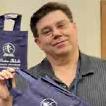
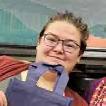


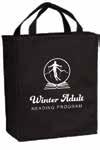



Learn more at ppld.org/adults
Use the URL above or the QR code to get more information about these programs!

Wed., Feb. 1 - Fri., March 31
Cozy up with a good book this winter and join us for the 2023 Winter Adult Reading Program! Log 30 days of activities to earn prizes! Learn more at ppld.org/winterreading.
Join Shannon from Stampin' Up to create winter-themed greeting cards!

Join Willson and McKee for stories and songs of winter! e scent of peat smoke, the sound of popping re, the sight of dancing shadows — these are the gifts of winter. Come closer to the re and settle in for an evening of traditional songs and stories from Ireland and Scotland.
Get into the Winter Adult Reading Program spirit with this thematic art project. Use embroidery oss and pins to make a string art version of classic winter symbols.
Give the gift of warmth to a loved one this winter. Tell that special someone "U r cute" and make sure they don't have cold hands.
Get into the Winter Adult Reading Program spirit with this thematic art project. Using bleach on either fabric you bring or on one of our small handkerchiefs, you will learn how to make a unique work of art.
PPLD celebrates Irish American Heritage Month (March)
Skean Dubh is one of the most highly sought after acoustic Celtic bands in the Rocky Mountain region. Featuring unforgettable vocals, hauntingly beautiful uilleann bagpiping, sophisticated ddle, and engaging rhythms.
PPLD celebrates Women's History Month (March)
Join us for an entertaining and surprising day with the “Unconventional Women of the West," presented by the Legendary Ladies. e ladies will make history come alive by sharing tales of women who helped shape the West. Get ready for a little something di erent from a group of women who are sure to make you laugh, re ect, and appreciate the West.




ese classes are for beginners to learn how to use a computer, email, and Microsoft Word. Patrons can nd more information and sign up for classes at ppld.org/computers
Scholarships are available to Career Online High School for those seeking a high school degree. is online learning platform gives learners credit for the classes they have already completed in high school. Learners complete a tailored learning path that includes a career certi cate. Interested patrons can learn more and apply for a scholarship at ppld.org/cohs
PPLD's Food Industry Training course is for those interested in starting a career as a line cook or prep cook. e course is approximately ve weeks long and o ered at no charge. Courses are o ered in the fall, winter, and spring. e course includes hands-on instruction in cooking techniques, resume preparation for a job search in the food service industry, and ServSafe™ certi cation. Patrons can learn more at ppld.org/FIT.
Patrons can meet with the Career Navigator for help researching PPLD's jobs, prepare resumes and cover letters, and practice interviews. e Career Navigator has open o ce hours at various libraries. Patrons can stop in to ask questions or talk. Patrons can also make a one-hour appointment for oneon-one career guidance. Learn more at research.ppld.org/career
Speak English and Write English
ese groups are for patrons to practice English language skills. ey are open to intermediate and advanced adult English language learners. ey are not appropriate for beginners. Patrons can learn more at ppld.org/practice-english.
is group is for immigrants who are ready to prepare for the naturalization test to earn U.S. Citizenship. Learn more at ppld.org/path-citizenship.
Learn more at ppld.org/equity-diversity-and-inclusion
Use the URL above or the QR code to learn more about Equity, Diversity, and Inclusion programs!

Join PPLD and local artist Kevin Johnson as we honor Colorado Springs classical and jazz music legend and philanthropist Peggy Shivers with a special portrait to be displayed during the month of February in the gallery showing art created by Kevin Johnson.


Art inspires a sense of self-reliance for older adults, even when the participant is somewhat reliant on a partner to help with materials use. Each month adults 55+ can produce high-quality art projects that respect their wealth of life experiences, skills, and innate capacity to create. Learn more at tinyurl.com/art-for-all.
is popular program returns to East Library on the last Wednesday of every month. You bring your lunch, and we’ll bring the popcorn, drinks, and movie. Learn more at tinyurl.com/ ppldseniormovie.
e kits are for adults with memory impairments such as Alzheimer's and dementia. ese kits contain activities these patrons and their caregivers can use to engage each other and enjoy connecting through creative play. Kits will be available starting in February at select library locations. Patrons can ask librarians at the service desk for these materials.
Mon., Jan. 9 | 9 - 11 a.m.
Library 21c
Serving persons with developmental and physical disabilities, PPLD’s popular Library Explorers program is being relaunched this January. PPLD sta will kick o the reimagined program by registering eligible patrons for the 2023 Winter Adult Reading Program*, highlighting the Library’s new large print and braille book selections and revealing the new Library Explorer kits. Visit tinyurl.com/ppldexplorers for more information. *See page 12 for more information about the Winter Adult Reading Program which kicks o on Wed., Feb.1.
PPLD celebrates patrons that are providing positive in uences in the areas of culture, business, and leadership in El Paso County. ese local leaders will discuss how they are shaping our community through hard-work and commitment to the issues that are a ecting the diverse individuals around us. Learn more at tinyurl.com/patrono n uence.
PPLD celebrates Deaf History Month (March/April) Explore and enjoy our programs, resource guides, assistive technology, and reading lists.
Sat., April 29 10 a.m. - 3 p.m. Library 21c


A maker is someone who creates – to be innovative, to solve problems, to bring something beautiful into the world, or simply to have fun. They have an idea, and they bring it to life. Making can encompass just about anything, from high tech to low tech to no tech, from art to fabrication to artistic fabrication, from needles to table saws to software.
Show us what you like to make by exhibiting at this year’s All Pikes Peak Makes event.
Submissions open Fri., Jan 13.
For more details and to submit your request, visit ppld.org/APPM.


All programs are virtual. Use the QR code or the URL above to learn more!

1st Monday | 10 - 11 a.m.
3rd Monday | 2 - 3 p.m.
Are you interested in researching your genealogy but aren't sure where to start?
Join us for an introduction to genealogy research strategies, including getting started, organizing research, and selecting and searching for records.
Pre-1850 Research
Tue., Jan. 24 | 7 - 8 p.m.

Researching ancestors in the U.S. before 1850 can be a challenge. Join us to learn strategies, records, and tips to help you dive deeper into your genealogical research.
Tue., Feb. 28 | 7 - 8 p.m.
Researching your African American ancestors can be a challenging, yet rewarding, process. In addition to research strategies, this class will cover how to use both traditional and unique resources to explore your family tree.
PPLD Genealogy Resources
Tue., March 28 | 7 - 8 p.m.
PPLD o ers many resources to aid you with your genealogical research. is class will provide an overview of our databases, reference materials, and additional services to help you take your research to the next level.
Tue., April 25 | 7 - 8 p.m.
Google is an amazing tool for research! In this class, we'll cover how to perform more e ective genealogy searches and provide an overview of some of Google's best tools for researching your ancestors.

Discover what our city looks like through the lens of someone experiencing homelessness. View photos and artist statements from individuals who are unhoused and were trained in digital photography.
Download each program's handout from the calendar listing, or check out our website to learn more about PPLD's other genealogy resources!


Learn more at ppld.org/teens

Join us to create a painting inspired by Black American Artist Alma omas!

PPLD Celebrates
Learn the basics of American Sign Language (ASL) and Deaf culture with instructors from the Colorado School for the Deaf and the Blind (CSDB)! Interested participants will be entered into a drawing for a scholarship to attend a semester-long ASL class at CSDB.
Ever feel like everybody's got a podcast but you? Have something on your mind you want to share with the world? Come join Dave Gardner with Studio809 Podcasts to learn the magic behind the making of a podcast.
Are you interested in working in the food industry or looking for your rst culinary job? Join us in our commercial grade kitchen at Library 21c for a two-day introduction to the food industry and gain the foundational skills needed to enter this workforce. Participants will learn basic food safety practices for preparing and serving food, get hands-on practice with knife techniques, and complete their ServSafe Food Handler certi cation by the end of the second day. For ages 16 - 24.

Use the URL above or the QR code to learn more about

Join Madame Barbara from Springs French Music Lingua for a unique program that teaches French and sign language to children, ages 8 and under, using a fun mix of music, movement, art, drama, and storytelling.
Join us for a 30-minute, interactive program about safety from the Colorado Springs Fire Department. Children ages 3 - 7 will learn the di erence between re as a tool not a toy, what a smoke alarm sounds like, what to do when the smoke alarm sounds, and practice “Get Low and Go.” Meeting with our community helpers before an emergency allows children to learn about safety in a relaxed environment.
Learn about safety around dogs and dog care, and visit with the loveable dogs from the National Mill Dog Rescue in Colorado Springs. is is an informative and interactive program for children ages 3 - 8 and their caregivers.
Kindergarten Round-Up Resource Fair
Sat., March 11 | 10 a.m. - 1 p.m. Sand Creek Library
Are you ready to register your child for kindergarten and aren’t sure where to begin? At the Kindergarten Round-Up Resource Fair you can ask questions, explore enrollment options, and learn ways to help your child be as prepared as possible to start school.

Chemistry Magic
Sat., April 1 | 11 a.m. and 1 p.m. East Library

For centuries chemistry has been the magical science! Experience the mysteries of color-changing potions and other captivating concoctions with Marc from Cool Science!
Join Border Collies Joey and Kira as they hunt for dragon eggs. Will they nd one or will they become dragon food? Dog tricks abound in this frivolous medieval tale! For ages 0 - 12.
Magic Dave attempts to train a group of re-breathing, vicious dragons! Dave is in for a shock though, because these dragons are more about having fun than being erce in this hilarious adventure featuring magic, puppets, and lots of silliness.
Come visit the unicorns anytime between 10 and 11:45 a.m. for a peek into the magical realm of these beloved creatures.
Zoomobile: Magical Animals
Mon., March 20 | 10:30 a.m. Calhan Library
Meet a few magical animal ambassadors from the Cheyenne Mountain Zoo. Registration required.
Zoomobile: Animal Mythbusters Sat., April 1 | 1 p.m. Sand Creek Library
Can porcupines shoot their quills? Do cockroaches serve any purpose? Learn the truth about a few well-known animal myths. After these myths you’ll be seeing wildlife in a whole new way! No registration necessary.

ese programs let your child use their imagination and creativity in two ways: Art and Make. It can get messy, but we are okay with that! So, roll up your sleeves and create things like dinosaur habitats, rainbow art, fairy houses, suncatchers, and so much more. Explore your own ideas or collaborate with others — the one requirement is that you have fun! tinyurl. com/KidsMake2023
Registration required for all KidsMAKE programs. Ages 5 - 12.
Explore a variety of materials and hand tools to make a unique creation from your own imagination! is program will include the use of hammers, nails, and other similar tools. Children must be accompanied by a hands-on and attentive adult.
Create a prickly, pet porcupine pull-toy using hammers, nails, and googly eyes! is program will include the use of hammers, nails, and other similar tools. Children must be accompanied by a hands-on and attentive adult.
Get creative and craft your very own sensory board. Learn how to use various types of fastening tools while experimenting with di erent textures. is program will include the use of hammers, nails, and other similar toolschildren must be accompanied by a hands-on and attentive adult.
Kids will make their own work of art using hammers, nails, and other similar tools. Children must be accompanied by a hands-on and attentive adult.
Homeschoolers: Design a comic book inspired speech bubble that "pops" with shapes, colors, and layers. Your creation will focus on just one word that packs a punch in this masterpiece that invites viewers to "hear with their eyes." KAPOW!
Island Exploration: Treasure Map!
Homeschoolers: Create a uniquely illustrated island map, inspired by Norwegian adventurer or Heyerdahl. Use your imagination as you add mysterious sea creatures, tropical trees, and seaworthy sailing vessels, then use watercolor paints and colored pencils to bring life to your masterpiece!
Homeschoolers: In this unique project, you'll explore Pablo Picasso's Blue and Rose Period paintings and Henri Matisse's "painting with scissors" method. Combining paint, the print process, and bold organic shapes, you'll create an unlikely multimedia masterpiece!
Homeschoolers: Paint like an Impressionist, capturing the essence of a lively springtime bouquet. Apply the painting techniques of Berthe Morisot, add chalk pastel highlights, a 3D butter y, and ... voila, a classic masterpiece!
Pollinators, a vital part of our eco-system, are in trouble! Join us in learning about the process of pollination through hands-on activities; explore the lives of pollinating bees, bats, butter ies, and more. Participate in conservation e orts by creating bee hotels and seed bombs to take home. For ages 6 - 12. Some locations may require registration.
In order to better study living things, scientists arrange them into a series of groups according to features they share. Discover how classi cation helps us to understand the relationships between species and how di erent species evolved. For ages 5 - 12. Some locations may require registration.

Make some healthy, nut-free, no-bake energy bites with us! Learn how the body uses food for energy and how the food choices we make (healthy vs. unhealthy) help —or don’t help — with fueling our bodies. For ages 7 - 12. Registration is required.
Dive into Drew Daywalt’s laugh-out-loud funny picture book, e Legend of Rock Paper Scissors. Homeschoolers will explore the story — and the classic game — with a variety of engaging activities that touch upon math concepts and more. For ages 5 - 10. Some locations may require registration.
Learn about the basics of solar energy, and then use that knowledge to create and experiment with a vibrating cockroach powered by solar energy. Some locations may require registration.
Science: Moon Landers
Fri., Jan. 20 | 1 p.m.
East Library
Join the educators from STARBASE Peterson for this fun, hands-on engineering activity. Students will create a “moon lander” out of everyday materials, drop it from various heights, and test and improve their designs to keep the “astronaut” inside the capsule safe. For ages 7 - 12. Registration required.
Science:
Come learn about the human digestive system by making a 3D model with colored clay! Presented by Cool Science. For grades 4 - 8. Registration required.
Science: They Walked the Earth in Colorado
Fri., March 17 | 1 p.m.
East Library
What prehistoric animals wandered the Colorado/Rocky Mountain region? Come explore this question with the Rocky Mountain Dinosaur Museum. For kids ages 5 - 12.
All programs for ages 5 - 12.
Is that Painting Really Just Dots: Seurat Pointillism
Participants will learn about artist Georges Seurat and explore the technique of Pointillism by creating their own painting masterpiece.
Learn about nebulae in space and experiment with watercolor techniques to create your own nebula painting.
Explore the magic of seed germination. Create your own Chia Pet, and get ready to watch it grow. Prepare seeds in a bag where you watch the roots grow and the seeds germinate.
Your children will learn to explore petroglyphs in this archaeology program. It starts with a book and then includes several petroglyph activities – sandpaper petroglyphs, playdough petroglyphs, and Taino petroglyphs. Let their imagination y and see what they create.
Calder Inspired Art Fri., Jan. 13

Craft Stick Harmonica Fri., Feb. 10
Rainbow Gravity Spinner Fri., March 10
Military Parachutes Fri., April 14
All programs for ages 9 - 12.
Boost your cookie decorating skills by using royal icing to create rainbow tie-dye cookie creations!
Have you ever wondered what you would look like inside a video game? Do you have the perfect design for a Minecraft skin? Come create your own pixel art portrait!
Play Battleship like you've never played it before - life-sized!
Come experience the joy and goosebumps of camp re stories. Bring a friend, a blanket or sleeping bag to lay on the oor, and a favorite scary story. Create a memento to take home to help remember this amazing camping adventure. S’mores anyone?
Have a voice in your community, meet new friends, and make a di erence, all while having fun! We want to learn from the experts (you!), what programs and events tweens want to see at the Library. Each session of the Junior Advisory Board will include time for you to give ideas and feedback and time for a fun project or activity.
Play D&D with other tweens, led by our very own Dragon Master Tani! New members are always welcome, and no experience is required.
